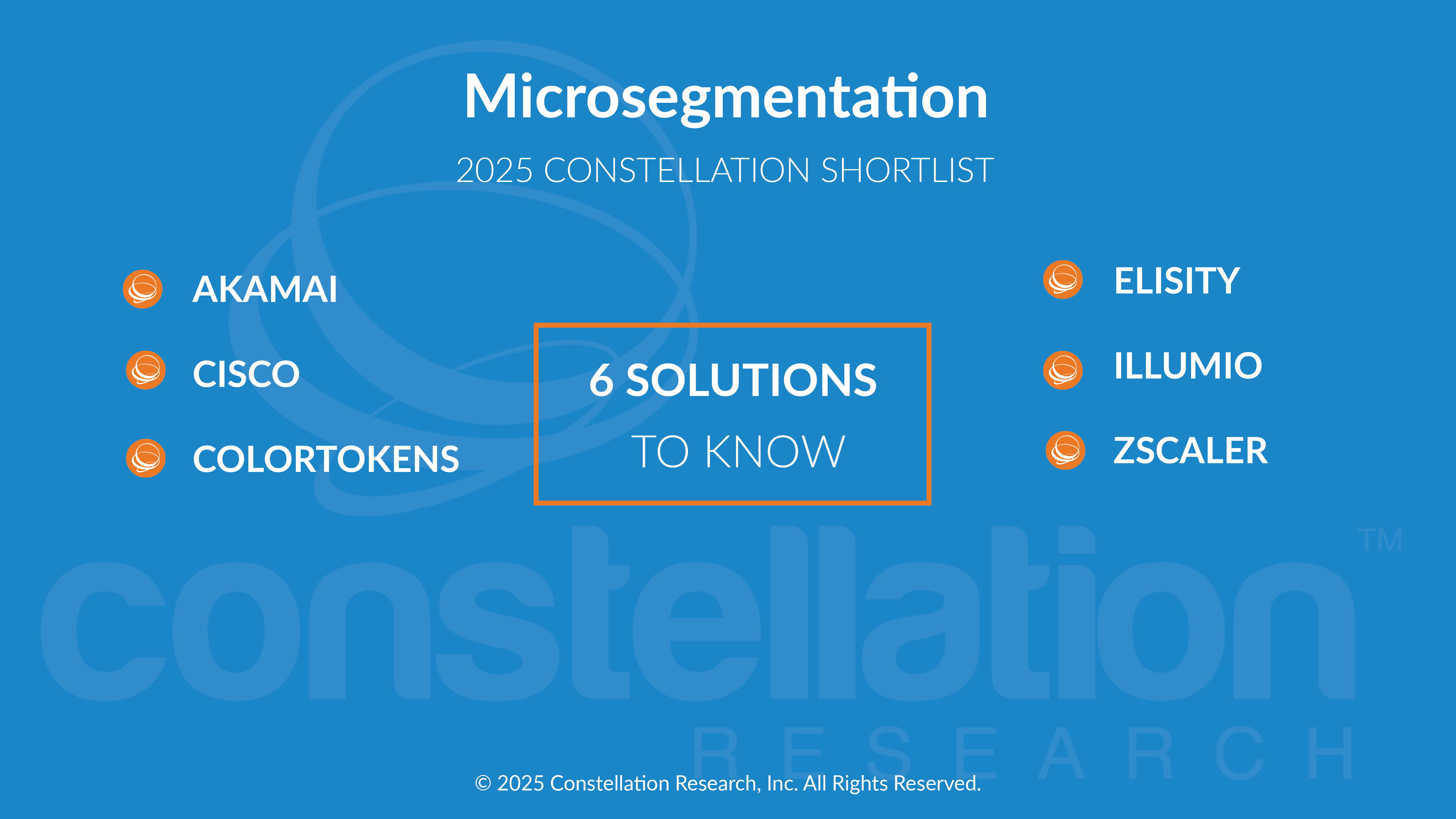
About This ShortList
In today’s sprawling IT landscapes, traditional security approaches based on firewalls and perimeter defenses often struggle to contain lateral movement and sophisticated attacks. Microsegmentation is a granular security strategy that carves your network into smaller, isolated segments, effectively creating mini-security perimeters around individual workloads, applications, and microservices.
Traditional security approaches often fall short when an attacker gains access to one area of a network. Microsegmentation creates smaller, isolated segments, preventing attackers from easily moving laterally within the environment and accessing critical resoures. By reducing the attack surface and limiting access to sensitive data, microsegmentation minimizes the potential damage from a data breach. Even if attackers compromise one segment, they’re contained within and cannot easily access other sensitive areas. Microsegmentation simplifies security management by applying consistent policies across segmented environments, reducing complexity and operational overhead.
The Microsegmentation market is experiencing a steady growth, projected to reach $10 billion by 2030. This surge reflects the increasing adoption of hybrid architectures, the distributed nature of modern applications, and the need for more dynamic and adaptable security controls.
Threshold Criteria
Constellation considers the following criteria for these solutions:
- Policy-Based Segmentation: Defines and enforces granular security policies that control traffic flow between segments, restricting unauthorized access and lateral movement.
- Dynamic Segmentation: Adapts segmentation policies automatically based on workload behavior, threat intelligence, or application context, ensuring continuous security.
- Integration with Security Tools: Integrates seamlessly with existing security solutions like firewalls, intrusion detection systems, and identity management platforms for comprehensive protection.
- Automated Provisioning and Enforcement: Automates the creation and enforcement of segmentation policies, reducing manual work and human error.
- Visibility and Monitoring: Provides comprehensive visibility into network traffic flows and segment activity, enabling real-time monitoring and threat detection.
- Predictive Segmentation: AI can analyze network traffic patterns, application behavior, and threat intelligence to predict and automatically implement micro-segmentation controls, proactively mitigating potential threats.
- Self-Healing Segments: AI-powered Microsegmentation can automatically adjust security policies and isolate compromised segments in real-time, minimizing the impact of security incidents.
- Anomaly Detection: AI can analyze traffic within segments to identify suspicious activity and potential breaches, enabling faster and more accurate threat detection.
The Constellation ShortList™
Constellation evaluates more than 34 solutions categorized in this market. This Constellation ShortList is determined by client inquiries, partner conversations, customer references, vendor selection projects market share and internal research.
- Akamai
- Cisco
- ColorTokens
- Elisity
- Illumio
- Zscaler
Frequency of Evaluation
Each Constellation ShortList is updated at least once per year. Updates may occur after six months if deemed necessary.
Evaluation Services
Constellation clients can work with the analyst and research team to conduct a more thorough discussion of this Constellation ShortList. Constellation can also provide guidance in vendor selection and contract negotiation.


